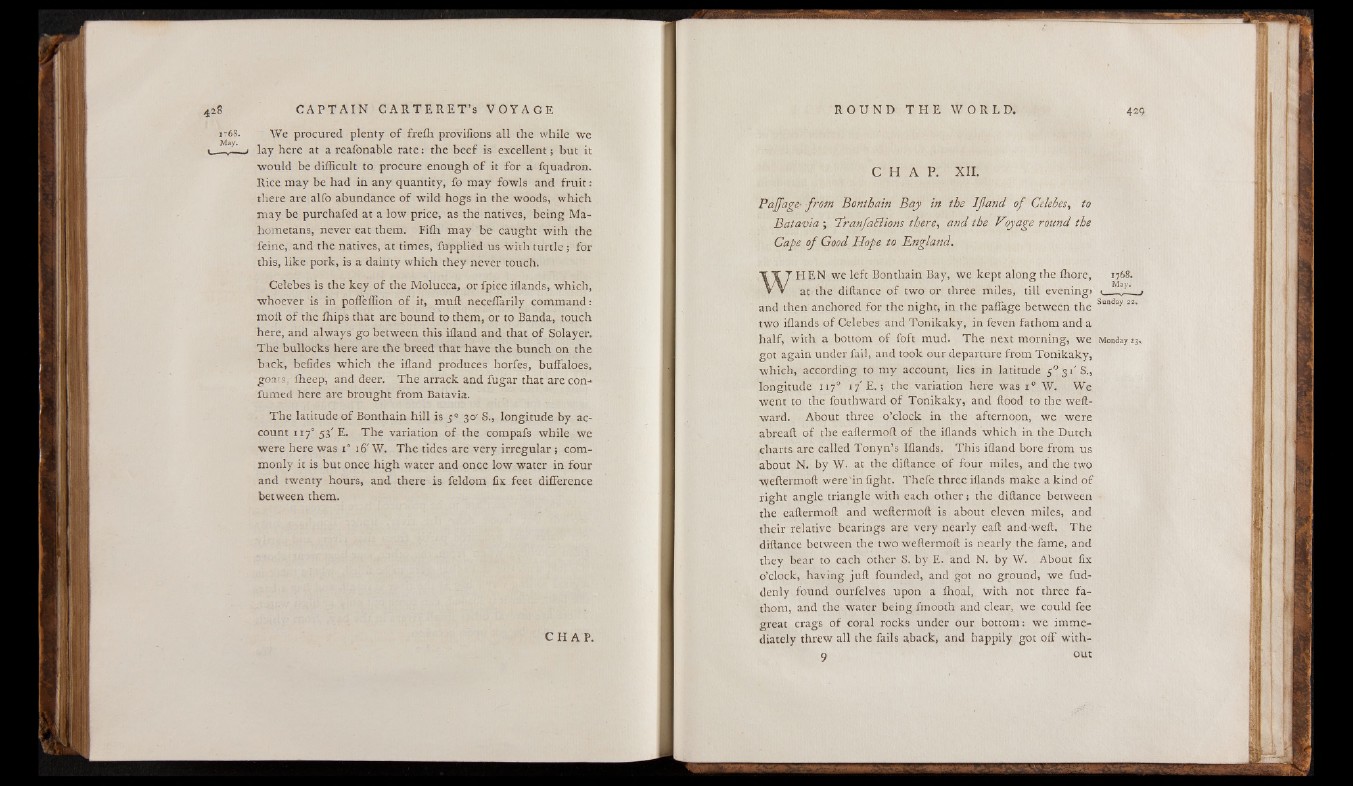
We procured plenty o f frefh provifions all the while we
lay here at a reafonable rate: the beef is excellent; but it
would be difficult to procure enough o f it for a fquadron.
Rice may be had in any quantity, fo may fowls and fru it:
there are alfo abundance o f wild hogs in the woods, which
may be purchafed at a low price, as the natives, being Mahometans,
never eat them. Fifh may be caught with the
feine, and the natives, at times, fupplied us with turtle ; for
this, like pork, is a dainty which they never touch.
Celebes is the key of the Molucca, or fpice iflands, which,
whoever is in polTeffion o f it, mull neceffarily command:
moll o f the ffiips that are bound to them, or to Banda, touch
here, and always go between this ifland and that o f Solayer.
The bullocks here are the breed that have the bunch on the
back, befides which the ifland produces horfes, buffaloes,
goats, fheep, and deer. The arrack and fugar that are con-
fumed here are brought from Batavia.
The latitude o f Bonthain hill is 30' S., longitude by account
117° 53’ E. The variation o f the compafs while we
were here was 1° 16' W. The tides are very irregular; commonly
it is but once high water and once low water in four
and twenty hours, and there is feldom fix feet difference
between them.
CHAP.
C H A P . XII.
Paffage* from, Bonthain Bay in the I f and of Celebes, to
Batavia ; ‘TranfaElions there, and the Voyage round the
Cape of Good Hope to England.
WHEN we left Bonthain Bay, we kept along the ffiore, 1768.
at the diftance of two or three miles, till evening! < _a— ■
and then anchored for the night, in the paffage between the Sunday2Z’
two iflands of Celebes and Tonikaky, in feven fathom and a
half, with a bottom of foft mud. The next morning, we Monday 23.
got again under fail, and took our departure from Tonikaky,
which, according to my account, lies in latitude 50 31' S.,
longitude 117° 17' E . ; the variation here was 1° W. We
went to the fouthward o f Tonikaky, and flood to the weft-
ward. About three o’clock in the afternoon, we were,
abreaft of the eaftermoft of the iflands which in the Dutch
charts are called Tonyn’s Iflands. This ifland bore from us
about N. by W. at the diftance of four miles, and the two
weftermoft were'in fight. Thefe three iflands make a kind of
right angle triangle with each other; the diftance between
the eaftermoft and weftermoft is about eleven miles, and
their relative bearings are very nearly eaft and weft. The
diftance between the two weftermoft is nearly the fame, and
they bear to each other S. by E. and N. by W. About fix
o’clock, having juft founded, and got no ground, we fud-
denly found ourfelves upon a flioal, with not three fathom,
and the water being fmooth and clear, we could fee
great crags of coral rocks under our bottom: we immediately
threw all the fails aback, and happily got off with-
9 out